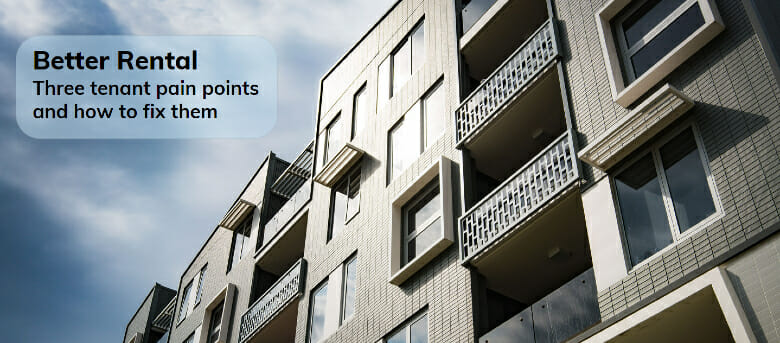
“If I can track my pizza on my phone, why can’t I expect a fast and frictionless rental experience?”
This question — or various iterations of it — is being asked by an entirely new generation of renters who have very different expectations of customer service than their parents once did.
In an era of instant information, where e-commerce allows us to shop from anywhere and any time, renters no longer want to spend their Saturdays pounding the pavement or filling in dozens of rental application forms. They don’t expect to deal with real estate agents and property managers who operate in an analogue world. And they don’t understand why paying their biggest monthly expense — their rent — is not a positive and personalised interaction.
Whether virtual tours or AI-enabled customer service bots, technology can make the process of renting better. Despite rapid advances in real estate technology, many property companies operate in an analogue world; and that means, from the start of the discovery process to the day they move out, the renter is beset by pain points.
Ready for Generation Rent
But as “Generation Rent” demand a better rental experience, leaders in the build-to-rent (BTR) sector are answering the call. The savviest operators are delivering better customer service — and better rental — with the help of a platform powered by the smartest of smart technology.

Bernie Devine, Senior Regional Director, APAC, Yardi
Yardi’s latest whitepaper, Better Rental, explores the opportunities in the BTR sector and outlines three customer pain points that are easiest to address. Australian BTR specialist Arklife, showcased in the report, reveals some of the processes it is automating to make life easier for customers.
Because BTR is designed for tenants, each development is crafted and curated for a better rental experience. Think concierge services and high-quality communal facilities, the choice to paint the walls or own a pet, flexible leases and security of tenure, as well as professional management and property maintenance.
Build-to-Rent on the Rise
BTR is well-established in the United States, Europe and the United Kingdom, where it is known as multifamily housing. In the UK, BTR covers 2 percent of existing housing stock, while in the US it accounts for 12 percent. Other markets, like Australia, are in their infancy. But industry analysts predict that up to 175,000 BTR apartments could be available in Australia within a decade.
Arklife managing director Scott Ponton has a clear message to every BTR operator looking to improve the customer experience: “There is no one technology solution that fits all issues. Proptech won’t stop evolving, because the customer pain points move. As you solve one pain point, another pops up. Our focus is on listening to our customers and using technology to address that.”
Most importantly, operators need to start seeing their building as a device much like the mobile phone. When we start to look at buildings through this lens, we gain a laser focus on the user experience. How good is the user interface and functionality? What hardware and software will power our device? And what platform will help us create the best user experience?
While some build-to-rent operators cobble together a range of solutions, the smartest BTR specialists are embracing a single end-to-end platform. In the United States, for example, 8 million people pay their rent each month through Yardi, and everything from leasing to repairs supports a seamless customer experience.
Our buildings are far more than bricks and mortar. They are devices that can boost productivity, performance and the human experience. This shift in thinking will change the way buildings are designed, how services are provisioned, how assets are valued and, most of all, what customers expect of space.
Leave a Reply